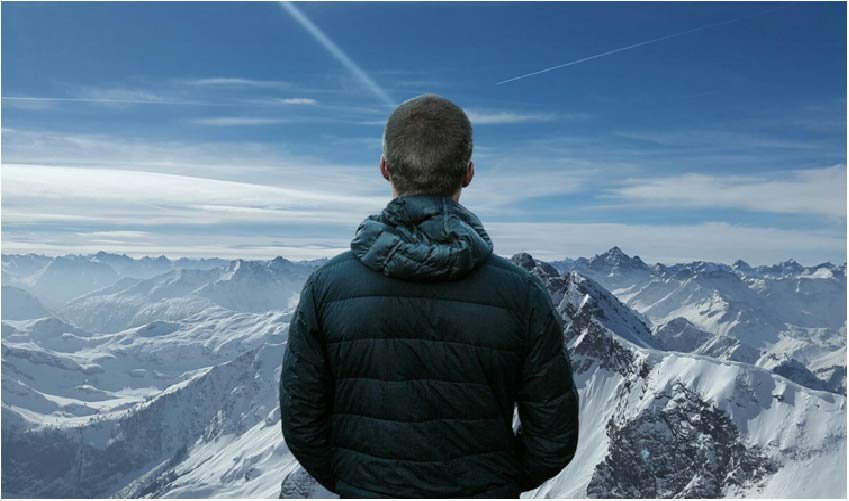Fashion
Choosing the Best Outdoor Insulated Jackets for Your Adventures

When venturing into the great outdoors, especially in colder weather, choosing insulated jackets can make a world of difference. Whether you’re hiking in the mountains, skiing on a chilly day, or just enjoying a winter walk, the right outdoor jacket can keep you warm, dry, and comfortable. With so many options on the market, it can be overwhelming to decide which jacket is best for your needs.
This guide will help you navigate through the process of selecting the best outdoor insulated jacket for your adventures. Read on.
Why Insulated Jackets Are Important
An insulated jacket is designed to trap your body heat and keep you warm in cold environments. The insulation used in these jackets comes in two main types: down and synthetic. Both have their advantages and disadvantages, but understanding these will help you make a more informed decision.
Down insulation
Down is lightweight, highly compressible, and offers a superior warmth-to-weight ratio. It’s an excellent choice for dry conditions, but it loses its insulating properties when wet.
Synthetic insulation
Synthetic fibers (like PrimaLoft) are moisture-resistant and maintain their insulating ability even when wet. These are often heavier than down jackets, but are a great option for wet or unpredictable conditions.
Climate and Weather Conditions
One of the first things to think about when choosing an insulated jacket is the environment in which you’ll be using it. The jacket you pick should reflect the conditions you’ll encounter during your adventures.
Cold and Dry Conditions
If you’re heading to dry, cold places like the Rockies or the Alps in winter, down jackets are often the best choice. Their lightweight warmth and compressibility make them ideal for long hikes, especially if you’ll be moving fast and need to pack light.
Wet and Humid Conditions
If you’re heading to a place where you’ll face wet or rainy weather, like the Pacific Northwest or the UK, synthetic insulation is better.Synthetic fibers dry quicker and retain their insulating properties even when wet, making them a more practical option for moisture-prone environments.
Variable Weather
In locations where the weather can change rapidly, you’ll need a versatile jacket. Some jackets offer a combination of down and synthetic insulation, providing the benefits of both materials in varying weather conditions. Consider options with waterproof or water-resistant outer shells for extra protection.
Activity Level
The intensity of your activity is another crucial factor to consider. Will you be doing high-intensity activities like hiking, skiing, or running, or will you mostly be standing still, like when you’re watching a winter sporting event?
High-Intensity Activities
If you’re engaging in activities that will make you sweat, you may want a jacket with breathable fabrics and moisture-wicking properties. Look for insulated jackets with vents or zippers that can be opened to let out excess heat, keeping you from overheating during physical exertion.
Low-Intensity Activities
If you plan on spending time in colder environments without much physical movement, a jacket with thicker insulation will be more appropriate. For example, a heavier down jacket or one with thicker synthetic insulation will provide the warmth you need.
Weight and Packability
When choosing an insulated jacket, consider how much weight you’re willing to carry. A good outdoor jacket should provide enough warmth without being too bulky or heavy, especially if you’ll be carrying it in a backpack for extended periods.
Lightweight Options
For activities like hiking, you’ll want a jacket that is both lightweight and packable. Look for down jackets with excellent compressibility, allowing you to fold or stuff them into a small sack when not in use. This is especially useful for backpacking trips where space is at a premium.
Heavier Options
If you’re going to be in extremely cold conditions and don’t mind carrying extra weight, you might opt for a bulkier jacket that offers enhanced insulation and warmth.
Fit and Comfort
The fit of your jacket is another critical factor. A jacket that’s too tight will restrict your movement, while one that’s too loose won’t trap heat efficiently. Look for jackets with adjustable cuffs, waistbands, and hoods to customize the fit.
Layering
You may also want to consider how your insulated jacket fits over other layers, such as a base layer or a mid-layer. Make sure there’s enough room for layering without sacrificing warmth.
Hood and Collar
A jacket with a snug-fitting hood can protect your head from the elements. Many insulated jackets come with adjustable hoods that can be tightened around the face to keep cold wind and snow at bay. A high collar can also help protect your neck from cold drafts.
Durability and Features
For outdoor adventures, durability is essential. Look for jackets made from high-quality fabrics that are resistant to abrasion and tearing. Many jackets come with reinforced areas, such as the shoulders or elbows, to handle the wear and tear of outdoor activities.
Other features to consider include:
Waterproof or Water-Resistant Shells
Even if you choose a synthetic jacket, a waterproof or water-resistant outer shell will keep you dry in the rain or snow. Jackets with DWR (durable water repellent) finishes are often more breathable and comfortable during activity.
Pockets
Look for a jacket with functional pockets to store your essentials. Hand-warmer pockets and internal pockets for valuables are important for keeping items secure and easily accessible.
Windproofing
A good insulated jacket should offer protection against the wind. Look for jackets with windproof fabrics or coatings to shield you from biting winds.
Price and Brand Reputation
Price is always a factor when making a purchase, but it’s essential to balance cost with quality. Higher-end jackets made by reputable brands tend to use premium materials and cutting-edge technology to enhance performance and longevity.
Some well-known brands that consistently produce high-quality outdoor insulated jackets include Patagonia, The North Face, Snugpak, Arc’teryx, and Columbia. While these brands can be more expensive, they are known for:
- durability
- performance
- comfort
If you’re on a budget, there are plenty of options available from lesser-known brands that still provide great value. Just be sure to check product reviews and ratings to ensure you’re getting a jacket that meets your needs.
Get Insulated Jackets Today
Choosing outdoor insulated jackets depend on various factors, including the climate, the type of activity, and personal comfort preferences. Understanding your needs will help you select the right jacket to keep you warm and dry.
Take the time to consider the insulation type, fit, features, and durability of the jacket you’re considering. Happy adventuring!
If you want to read more articles, visit our blog.
-

 Celebrity1 year ago
Celebrity1 year agoWho Is Jennifer Rauchet?: All You Need To Know About Pete Hegseth’s Wife
-

 Celebrity1 year ago
Celebrity1 year agoWho Is Mindy Jennings?: All You Need To Know About Ken Jennings Wife
-

 Celebrity1 year ago
Celebrity1 year agoWho Is Enrica Cenzatti?: The Untold Story of Andrea Bocelli’s Ex-Wife
-

 Celebrity1 year ago
Celebrity1 year agoWho Is Klarissa Munz: The Untold Story of Freddie Highmore’s Wife
















